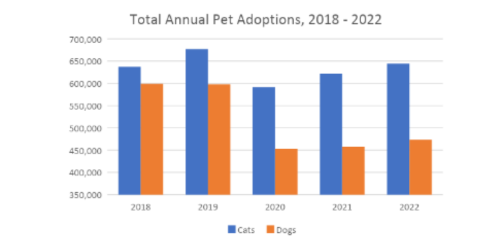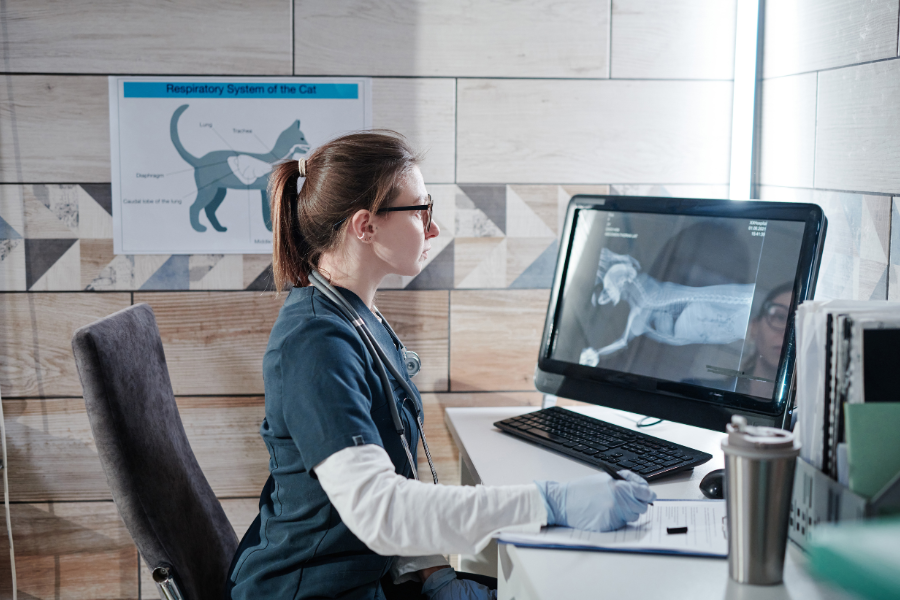The common story of a pandemic pet adoption boom widely seen across some national media headlines and veterinary news outlets is quite simply a myth.
To put it bluntly, it did not happen.Nearly three years out from the onset of the COVID pandemic, we now have the data that clearly demonstrates there was no pandemic pet adoption boom and, in fact, during the years since COVID, pet adoptions have been on the decline!
Look at the pet adoption data as reported by Shelter Animals Count using a data set that includes more than 1,000+ shelter organizations across the United States from 2018 – 2022. This data is not survey data but is transactional data sourced directly from the shelter information management systems.
The takeaway from this data is clear: the pandemic pet adoption “boom” is not as epic as the media has portrayed. On the contrary, the total number of pets adopted from shelters in 2020 was lower than it was in the prior two years. Moreover, adoptions of cats and dogs have still not rebounded to levels seen before the pandemic.
One reason for the decrease is simply that there was a smaller pool of animals available for adoption in 2020. Shelter intakes were down: fewer people were relinquishing their pets and animal control was less active in picking up strays. At the same time, shelters made a concerted effort to move animals out of the shelter and into foster care.
It also took longer to adopt a pet during the pandemic period. Shifting adoption visits to virtual appointments and later to only allowing a limited number of physical visits meant that fewer potential pet adopters could be handled in each week.
These barriers were also compounded by the fact that many shelters experienced a lack of human resources (e.g. staff, volunteers) during COVID, with lingering problems even today. Finally, successful spay/neuter programs also have continued to be effective in keeping shelter population numbers down.
Fewer animals in the shelter meant fewer animals to adopt.
While shelters are not the only source of newly adopted pets, they are the primary source of newly adopted pets. Several sources of data confirm that shelters are a major (if not the primary) source of acquired pets (see the latest AVMA Pet Demographic Study).
While the available data on pet acquisition from sources outside a shelter, such as obtaining a new pet from a breeder, or a friend or picking up a stray, are difficult to obtain and in some cases nonexistent, the data is very clear that there was not a boom of adopted pets from shelters.
All this matters because decisions are being made within hospitals and across the veterinary profession based on the false notion that the demand for veterinary services has risen because of more pet adoptions.
We explained the economic reasons behind the current market situation in veterinary medicine in an earlier blog. It’s clear that veterinary hospitals have never been busier, and many have been pushed beyond the limit. And it’s also clear that the demand for labor is running hot with challenges in both staff recruitment and retention.
That said, decisions that affect the business of a veterinary practice, the livelihoods of the staff and patients it cares for, and the broader sustainability of veterinary medicine must be made on accurate and truthful information. Otherwise, we risk making poor decisions that can adversely affect the entire industry. It’s time to put this incorrect narrative to rest.
Just a reminder…
At VMG we are working to help you see around corners and improve the management of your veterinary hospital. If you are interested in learning more about VMG membership, fill in our short form. Our membership team will reach out within a few days.








